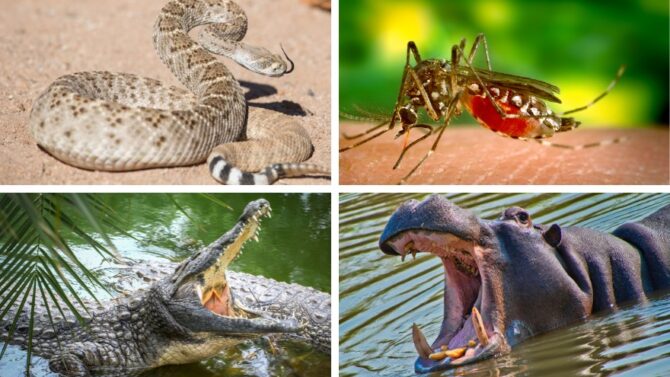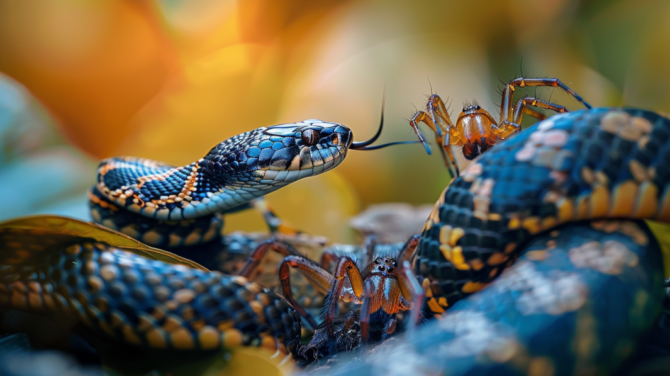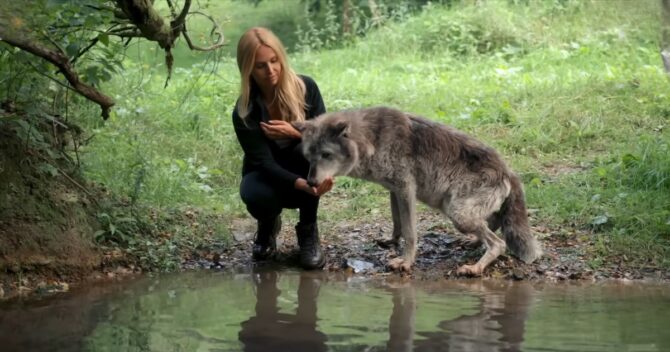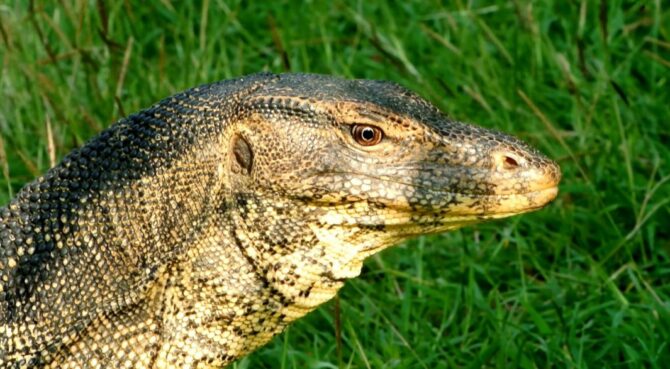Wildlife is replete with many deadly animals, but according to recent statistics, some creatures top the list.
These statistics are based on the number of deaths these animals have caused; the higher the number, the deadlier they are.
You may be surprised by some of the animals that figure on the list.
The most dangerous animals in the world include common species like sharks, tigers, lions, and crocodiles, as well as some little killers like mosquitoes and the tsetse flies.
From top predators with sharp teeth and powerful claws to venomous snakes and insects, these deadly creatures pose a serious threat to humans and other animals.
What are the Most Dangerous Animals in the World?
20. Golden Poison Frog

- Fatalities Per Year: Unclear
- Where Found: Colombia
- Physical Features: Bright yellow colors
- Dangerous Features: Toxin
Many frogs are poisonous, but no species can match the level of the golden poison frog.
Potent enough to kill 10 humans and 20,000 mice at a single touch, this amphibian is one to steer clear of.
The golden poison frog is a native of Colombia, where it is endemic.
The golden poison frog’s poison once served as a weapon for the indigenous people of Colombia, who would dip their arrows in the poison.
The bright color serves to warn predators of its poison. It is unclear how many people have died from an encounter with this frog as there are no records.
19. Komodo Dragon
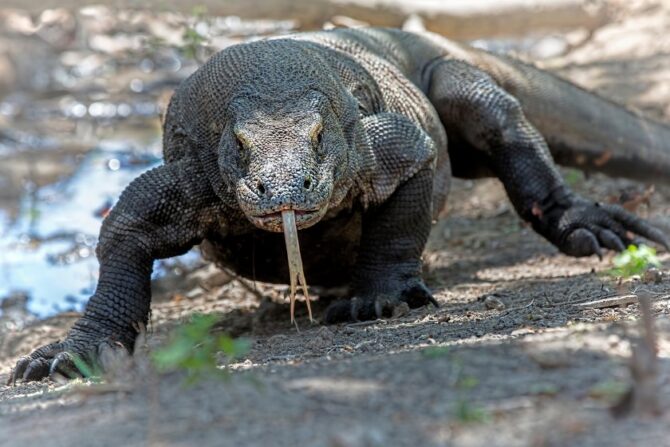
- Fatalities Per Year: 5
- Where Found: Komodo Island, Lesser Sunda Island (Indonesia)
- Physical Features: Long tail, serrated teeth, forked tongue
- Dangerous Features: Claws, sharp teeth, venom
The Komodo dragon is endemic to Indonesia, and though it would be good to see its population increase, the limited range is an advantage.
Being the largest lizard in the world, the Komodo dragon is known to be vicious, with some of its attacks even making the news.1 Its low number of victims is thanks to its limited range.
The Komodo dragon has a strong bite, and that alone is enough to injure a victim at best.
However, that’s not the only problem. Its bite is also laced with venom that affects blood clotting. This causes several negative symptoms and even death.
18. Blue-ringed Octopus
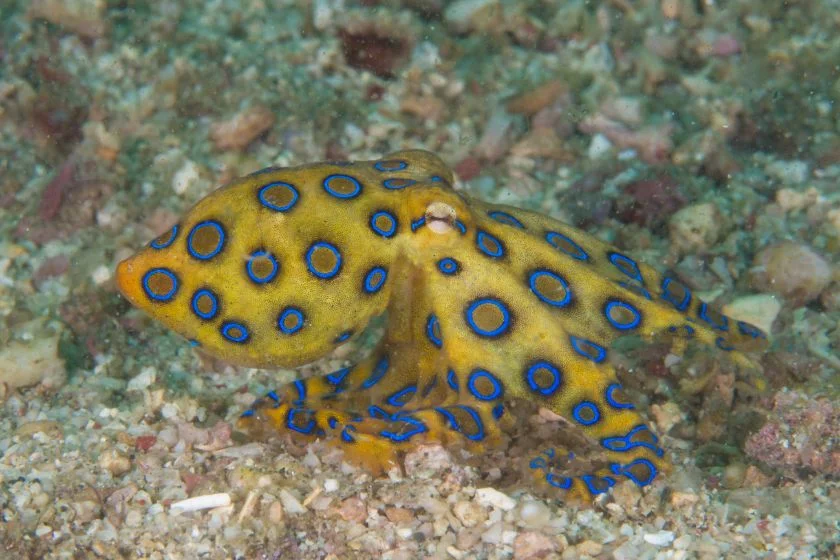
- Fatalities Per Year: 11
- Where Found: Japan, Australia, India, the Philippines
- Physical Features: Yellow skin, blue and black rings
- Dangerous Features: Venom
The blue-ringed octopus is small and docile, but it is more dangerous than it appears.
It is considered one of the most venomous marine animals in the world, with venom potent enough to kill 40 people.
Reports on the actual number of victims per year vary, but the estimate is at least 11 people.
The blue-ringed octopus transmits its venom through bites, and that often happens when it is provoked or feels threatened.
The crazy part about its bite is its painless nature. Yet the venom is deadly, containing the toxic tetrodotoxin.2
17. Shark
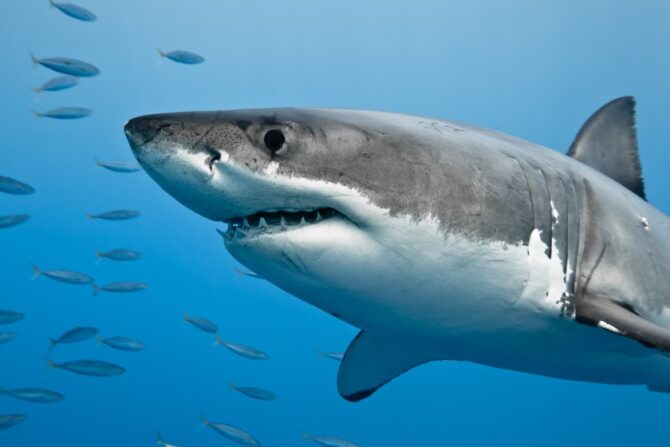
- Fatalities Per Year: 11
- Where Found: All oceans
- Physical Features: Teeth, cartilaginous skeleton
- Dangerous Features: Sharp teeth, powerful jaw
There are many shark species, some more dangerous than others, but to the average person, this distinction doesn’t matter.
Sharks are feared, and though their notoriety is sometimes exaggerated, we can’t deny that the popular species (like the great white shark) are dangerous.
Recent attacks show that it is common to hear of a shark attack.3
These creatures are strong predators and are, thus, very aggressive. Juveniles are likelier to go after a human to test their predatory skill.
Though not all encounters end in an attack, even the least provocation is enough for a shark to launch.
It is difficult getting away from its powerful jaws and sharp teeth.
16. Box Jellyfish
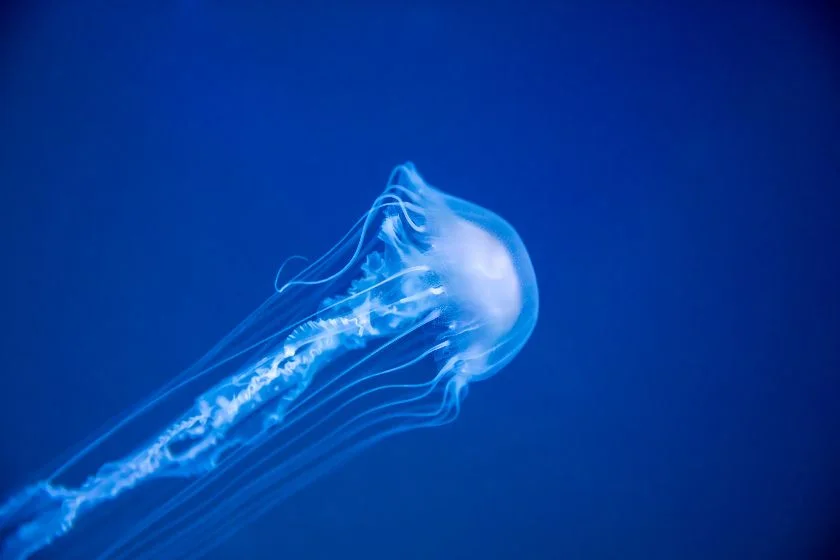
- Fatalities Per Year: 50 to 100
- Where Found: Indo-Pacific regions
- Physical Features: Hollow tentacles, box-like bell
- Dangerous Features: Venom, sting
As dangerous as sharks are, if you think they are the most dangerous sea creatures, you’d be in for a surprise.
Meet the box jellyfish, an animal that makes one think of Medusa, except rather than turn someone to stone, it stings.
Its sting is laced with venom that is both painful and fatal to humans. This sting comes from contact with the tentacles.
Even with the fairly high number of casualties, there might be more as many cases go unreported.
Not all species kill, but you may not have time to discover which is safer if you ever encounter one.
Be cautious in the Indo-Pacific region or the tropical side of Australia.
15. Deer

- Fatalities Per Year: 130 to 250
- Where Found: Worldwide except Australia and Antarctica
- Physical Features: brown fur, antlers
- Dangerous Features: Antlers, hooves
We did warn that many animals on this list will come as a surprise, and here’s a first.
Being a herbivore, many would probably consider the deer a safe animal. The statistics say otherwise.
The deer is the deadliest animal in the United States, causing around 200 deaths yearly and over 30,000 injuries.4
They are also linked to about 57,000 traffic collisions and 20 road-related deaths annually in the United Kingdom.
For starters, the deer can attack a human, just not for the same reason a predator would.
If a deer feels threatened or has young ones to defend, it will strike back with kicks, stomps, and charges.
However, that’s not the most dangerous part of this ungulate. The car-related accident it causes is what places it on this list.
Human expansion has led to habitat loss for the deer, leading to an overlap. It is not unusual to see a deer rush into the highway and cause collisions.
14. African Buffalo

- Fatalities Per Year: 200
- Where Found: Africa
- Physical Features: Black and brown fur, horn
- Dangerous Features: Horn, large size
The African buffalo may be a herbivore, but this animal should not be underestimated.
It is considered one of the most dangerous animals in Africa, piling up to 200 victims a year.
It is especially a nightmare to hunters as they kill a high number of these people at a go. An injured African buffalo is very deadly.
The best way to avoid an attack from the African buffalo is to give it a wide berth.
Getting too close will give the impression that you’re a threat, so it will defend itself.
Because it isn’t a predator it won’t attack preemptively, but it won’t hesitate to strike if needed. Mothers are even more deadly.
13. Tiger

- Fatalities Per Year: 250
- Where Found: Asia
- Physical Features: Orange and black striped fur
- Dangerous Features: Large size, teeth
Touted as the King of the Jungle, the tiger is as ferocious as it appears. It doesn’t consider humans as primary prey, but given the opportunity, it may not resist.
This is especially true if the human crosses the tiger’s territory. These creatures are territorial and do not take intruders lightly.
Because of their size, speed, and bite, a tiger attack can be fatal.
Even with their limited range, tigers have killed a good number of people. Some of these incidents have been newsworthy, such as the Indian slaughter that occurred last year.5
That said, humans are not innocent in the conflict. Tiger hunting has diminished the population to an endangered level.
12. Lion
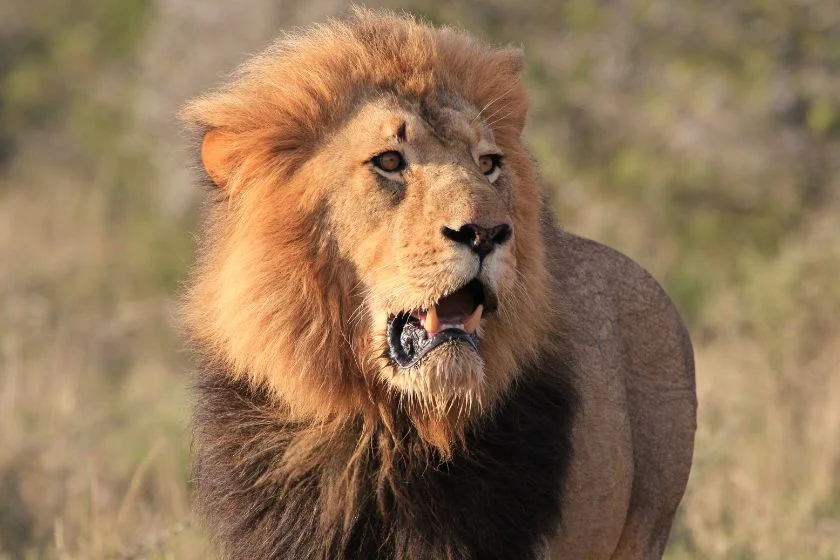
- Fatalities Per Year: 250
- Where Found: Africa, Asia
- Physical Features: Brown fur, muscular physique, mane (for the male)
- Dangerous Features: Size, strength, sharp teeth
The lion and tiger are usually compared as they are both strong predators—though their ranges don’t cross—so it isn’t surprising that the lion is listed close to the tiger.
In a fight, the tiger will probably overcome the lion, but the likelihood of getting attacked by a lion is higher.
Lions also don’t consider humans as primary prey, but they don’t need to be provoked before attacking.
Man-eating often occurs when the lion is starving, and males are more prone to hunting humans than females.
A very popular case is that of the Tsavo man-eaters. Just as with the tiger, lions have also been the target of hunters for centuries, leading to their vulnerable status.6
11. Elephant
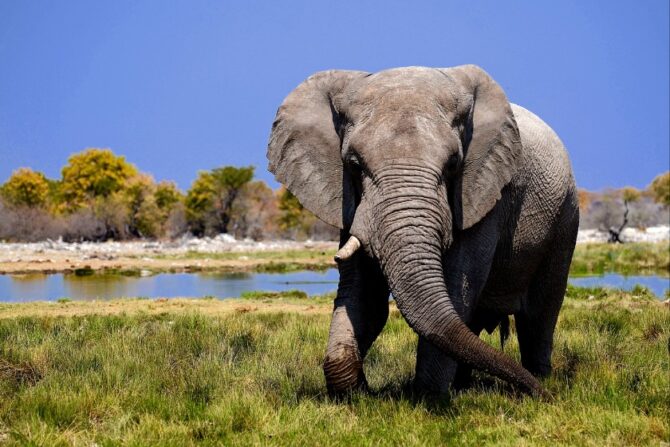
- Fatalities Per Year: 473
- Where Found: Africa, Asia
- Physical Features: Large size, elongated tusk, wide ears, long trunk
- Dangerous Features: Size, trunk, tusk, large feet
Being the largest living land mammal, the elephant is a sight to behold. We consider it fortunate that it is a herbivore, but it still poses a danger to people.
With over 400 casualties, the elephant is a threat in its range, despite not being a predator.
Elephants often attack out of defense, and due to their aggressive behaviors, conflicts between them and humans are on a rise.
Their playful nature sometimes gets them in farmlands where they plunder crops, leading the farmers to retaliate with stones and sticks.
The result is a fatality on both sides. Males also tend to be more aggressive than females, especially when going through a process known as musth.7
A nursing mother may also be aggressive.
10. Hippopotamus

- Fatalities Per Year: 500
- Where Found: Africa
- Physical Features: Barrel-shaped body, short tail and legs, gray color
- Dangerous Features: Size, tusks
There are only two living land animals bigger than the hippopotamus, the elephant and the rhinoceros.
With its incredible size and tusk, the hippopotamus is a nightmare to those who fall victim to it.
It is known to capsize boats that come across its path, and it is very aggressive.
There are many documented cases of attacks in past years, like the 2014 incident in Niger, where a Hippopotamus attacked and killed 13 people.8
Besides capsizing boats, hippos also raid farms to find something to eat. This is normal because they are herbivores, but the destruction of crops puts them at odds with farmers.
Their status as vulnerable shows that they also suffer from their conflict with humans.
9. Crocodile
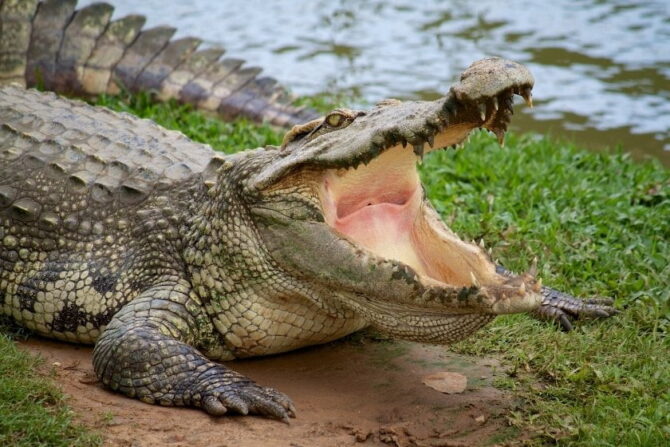
- Fatalities Per Year: 1000
- Where Found: Africa
- Physical Features: Grey or brown colors, long tail, scaly hide, long jaws
- Dangerous Features: The jaws and sharp teeth
The crocodile is a deadly reptile, a predator you shouldn’t mess with.
Lions and tigers can choose to not attack a human and even avoid them, but crocodiles see humans as prey.
They need no other reason to attack than that. The fatalities per year are around 1,000, but given the number of unconfirmed reports, it could be more than that.
Historically, crocodiles have been involved in many horrific attacks. One of the most popular is the ill-fated Battle of Ramree Island, where crocodiles decimated 1000 Japanese soldiers.9
While the number of casualties has been contested, it remains a notorious vase of crocodile’s deadliness.
8. Scorpion
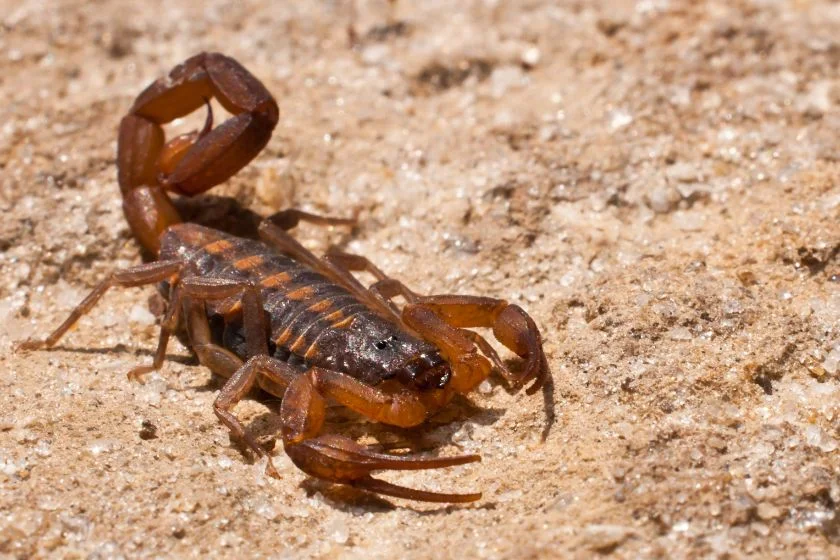
- Fatalities Per Year: 3,250
- Where Found: Worldwide except Antarctica
- Physical Features: Pincers, curved tail, eight legs
- Dangerous Features: Curved stinger
Scorpions are known for their stings, and one is quite painful. In and of itself, the sting doesn’t kill. However, different factors lead to a high number of casualties.
One such factor is how vulnerable children and seniors are to the scorpion’s sting. An adult may also be in fatal danger due to allergies.
When you consider how widespread the scorpion is, you’d see even more of why it is dangerous.
In many countries, scorpions get into a human residence and will sting if you accidentally get too close.
In those areas, you’re more likely to meet a scorpion than get attacked by a lion.
7. Assassin Bug
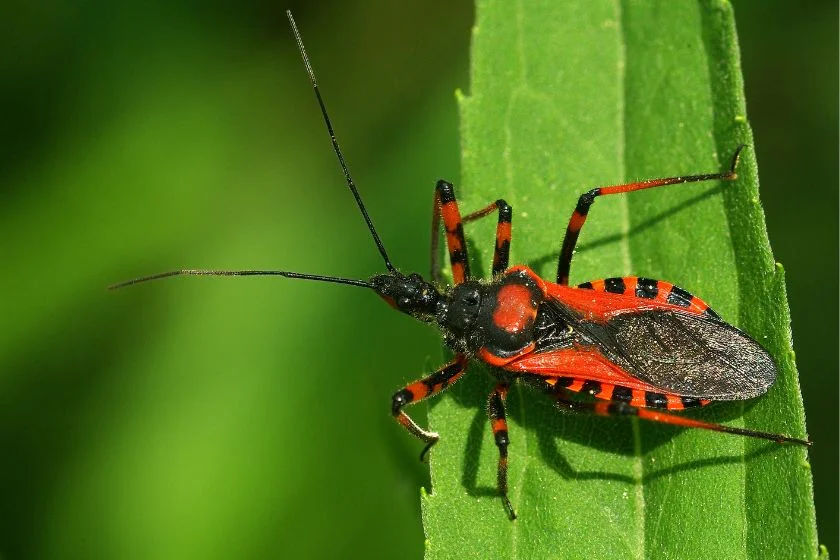
- Fatalities Per Year: 12,000
- Where Found: North America
- Physical Features: long head, body, and leg
- Dangerous Features: Bite
Going by the name alone, one can already conclude that the assassin bug is quite dangerous. But that’s not the only reason it is on this list.
The estimated number of people these creatures kill per year is up to 12,000.
That’s a lot for a small bug. An alternative name is a kissing bug, a name given because it bites people close to the lips.
The assassin bug’s bite transmits a parasite known as Trypanosoma cruzi.10
It causes Chagas disease—also known as American trypanosomiasis—a disease that can cause a heart attack. The assassin bug is indeed an assassin.
6. Dog

- Fatalities Per Year: 30,000
- Where Found: Worldwide
- Physical Features: Varies depending on the breed
- Dangerous Features: Sharp canines, claws
Every thought of your cute pooch as deadly? Maybe yours isn’t, but dogs, in general, can be dangerous.
Dog bite victims get up to 1,000 daily, and though attacks are not always fatal, they require medical attention.
Their proximity to humans as domestic pets also increases the chances of attack.
Some of the attack victims are older people and children. These two groups often die after getting bit.
Attacks on adults can also be fatal depending on the breed, and there’s rabies to consider.
The majority of rabies mortality amongst humans comes from dog bites.
Thankfully, dogs can be vaccinated from rabies, and every responsible pet parent should vaccinate their dogs.
5. Tapeworm
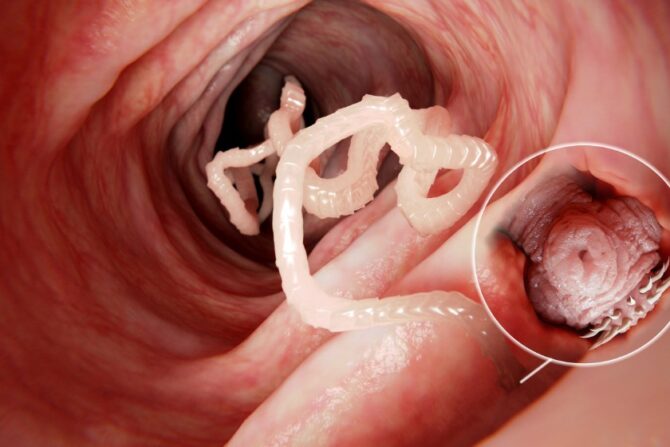
- Fatalities Per Year: 50,000
- Where Found: Worldwide
- Physical Features: Ribbon body, short neck, grasping head
- Dangerous Features: Suckers
As a parasite, the tapeworm is known to make a host out of humans and bring in unneeded baggage.
The number of casualties in a year reaches up to thousands, and that’s only a fraction of the millions of people it infects.
Tapeworms cause a digestive disease known as taeniasis, which is often gotten when people consume raw meat like pork and beef.
Symptoms include a lack of appetite or an excessive one, weakness, and pain. Fortunately, the disease can be treated.
4. Venomous Snakes
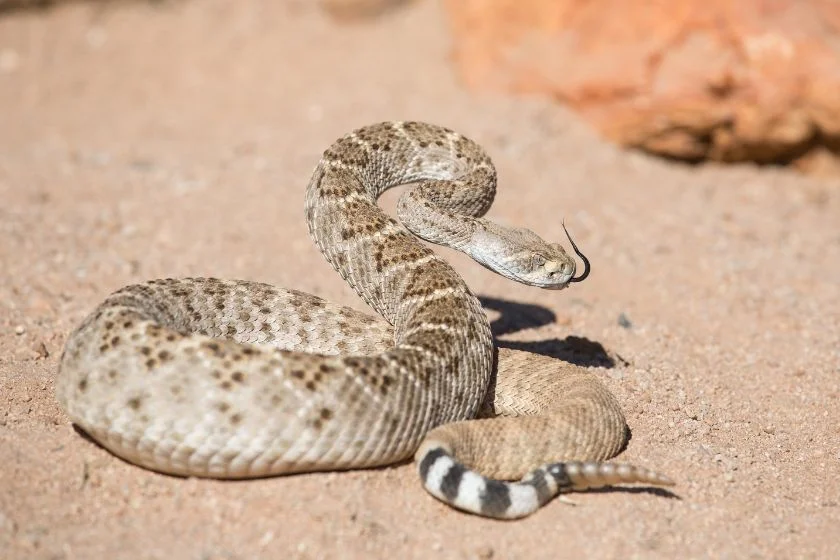
- Fatalities Per Year: 81,000 to 138,000
- Where Found: Worldwide except Antarctica
- Physical Features: Varies depending on the species
- Dangerous Features: Venom
Different snake species produce venom, all of which are classed under the suborder Serpentine.
The danger of venomous snakes is common knowledge, and it takes only a few minutes for the potent venom of some of these species to cause fatal damage.
Over 100,000 people die of snakebite, and over 1 million get bit in a year.
Symptoms of snakebite include paralysis, breathing difficulties, bleeding disorder, and some other serious effects like kidney breakdown.
How fast the venom works depend on the species, but generally, anyone who gets bit requires immediate medical attention.
3. Freshwater Snail

- Fatalities Per Year: 200,000
- Where Found: Worldwide
- Physical Features: Shell, gills, or lungs
- Dangerous Features: Parasites
Another surprising creature on this list is the freshwater snail. Given its docile nature, one would assume that the freshwater snail is safe.
In itself, it isn’t dangerous. However, the freshwater snail spreads a parasitic disease known as schistosomiasis.11
This disease affects millions in places like South America, Africa, and Asia. Its fatal rate gets up to 200,000.
This parasite transfers from snails to humans when the latter swim in water where the creatures live.
The parasite in the human body lays eggs that lead to the disease. Schistosomiasis is a serious disease, causing symptoms like anemia, dizziness, and even cancer.
2. Tsetse Fly
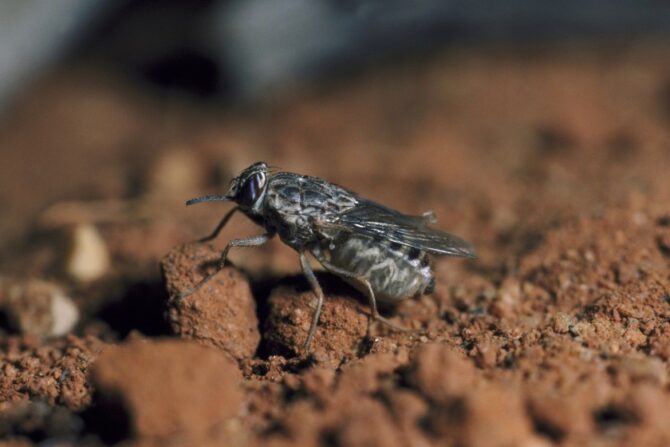
- Fatalities Per Year: 50,000 to 500,000
- Where Found: Africa
- Physical Features: Long proboscis, folded wings
- Dangerous Features: Trypanosomes vector
Widespread around tropical Africa, the tsetse fly is a parasitic insect that feeds on the blood of humans and other vertebrates.
Even more problematic is the fact that the tsetse fly is a vector of the trypanosome microscopic parasite. This causes trypanosomiasis, also known as sleeping sickness.
Symptoms of sleeping sickness include headache, weakness, and eventually an unconsciousness that can lead to death if untreated.
There are two variants of the disease, the West African trypanosomiasis and the East African counterpart.
The West African variant affects humans more. The death toll of sleeping sickness is high.
1. Mosquito
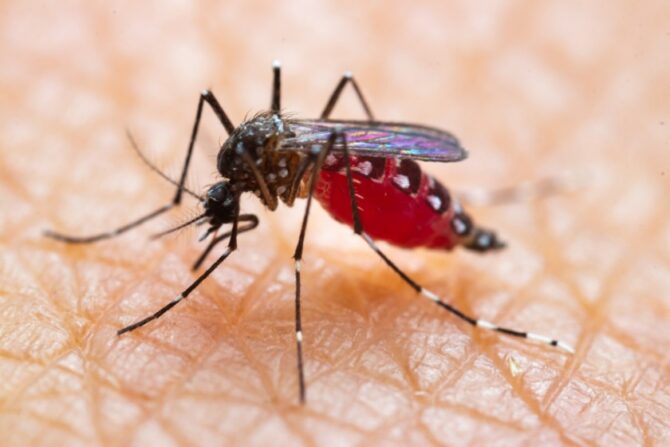
- Fatalities Per Year: Over 1 million
- Where Found: Worldwide
- Physical Features: Small size, buzz wings
- Dangerous Features: Parasites
Topping the list of the most dangerous animal in 2024 is the mosquito.
These small, unassuming blood-sucking animals seem harmless and can be easily swatted away, but their damage is tremendous.
Mosquitoes are vectors of different parasites, which in turn cause a variety of diseases.
Diseases that can be caused by mosquitoes include malaria, hemorrhagic fever, dengue fever, Zika infection, and Chikungunya. Of all these diseases, malaria has had the highest impact.
According to a report by the World Health Organization, over 600,000 people died of malaria in 2021.12
It is caused by plasmodium parasites carried by the anopheles mosquito.
Top 10 Deadliest Animals in the World
Below is a summary of the top 10 incredibly deadly animals and the corresponding human fatalities per year.
| # Rank | Animals | Human Fatalities Per Year |
|---|---|---|
| 1 | Mosquito | Over 1 Million |
| 2 | Tsetse Fly | Up to 500,000 |
| 3 | Freshwater Snail | 200,000 |
| 4 | Venomous Snakes | Up to 138,000 |
| 5 | Tapeworm | 50,000 |
| 6 | Domestic Dog | 30,000 |
| 7 | Assassin Bug | 12,000 |
| 8 | Poisonous Scorpions | 3,250 |
| 9 | Crocodile | 1,000 |
| 10 | Hippopotamus | 500 |
Wrap Up
The world is home to a wide variety of animals, some of which are incredibly deadly and have earned reputations as the most dangerous animals in the world.
But as we’ve seen, the deadliest amongst them are the ones we least expect.
The deadliest animal in 2024 is the mosquito, and there are other surprisingly deadly species on our list, like the freshwater snail.
While some of these creatures are found in remote wilderness areas, others can be found in urban environments, making it important for people to be aware of the risks and take necessary precautions.
So, it is crucial for people to protect themselves and avoid potentially lethal encounters.
References & Notes
Facts Sources:
- Nuwer R. 2013. The Most Infamous Komodo Dragon Attacks of the Past 10 Years. Smithsonian Magazine.
- Tetrodotoxin: Biotoxin. Centers for Disease Control and Prevention.
- Perth shark attack: Teenage girl dies in Swan River. BBC News.
- 2016. America’s most dangerous animal is the Deer. Daily Mail Online.
- Tiger that killed at least nine people — known as ‘Man-eater of Champaran’ — shot dead in India. ABC News.
- Weisberger M. 2017. What Drove Tsavo Lions to Eat People? Century-Old Mystery Solved. Live Science.
- Everything You Need To Know About ‘Musth’! Wildlife SOS.
- Hippopotamus attack kills 13 people, including 12 children, in boat near Niger’s capital Niamey. ABC News.
- An army of 1000 Japanese soldiers was decimated by saltwater crocodiles during the Battle of Ramree Island of World War II. The Vintage News.
- American Trypanosomiasis. CDC.
- Schistosomiasis. WHO.
- Malaria. WHO.
